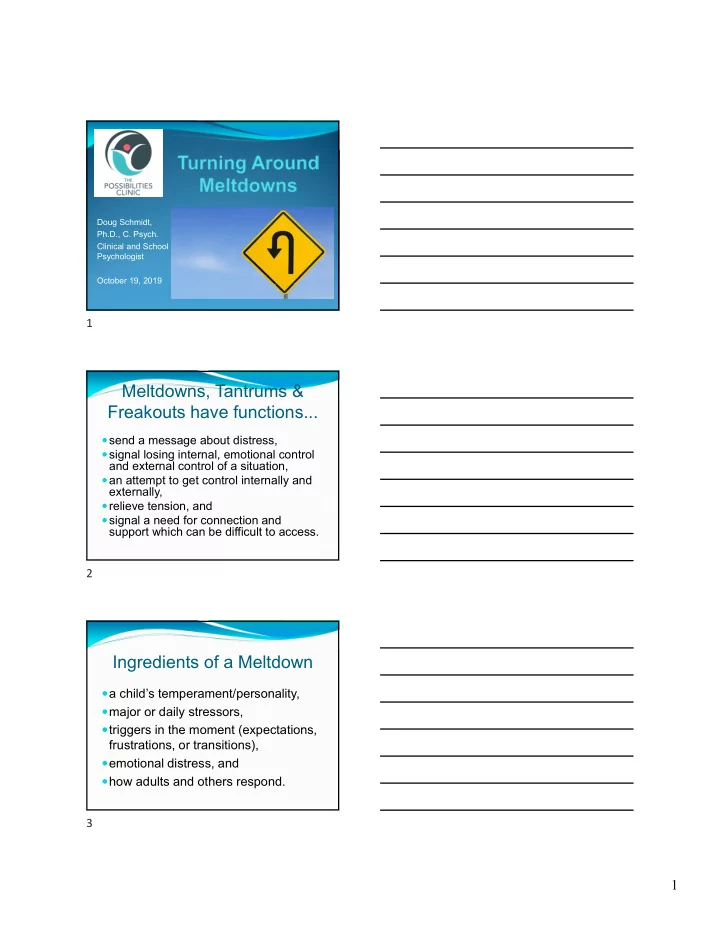

Doug Schmidt, Ph.D., C. Psych. Clinical and School Psychologist October 19, 2019 1 Meltdowns, Tantrums & Freakouts have functions... send a message about distress, signal losing internal, emotional control and external control of a situation, an attempt to get control internally and externally, relieve tension, and signal a need for connection and support which can be difficult to access. 2 Ingredients of a Meltdown a child’s temperament/personality, major or daily stressors, triggers in the moment (expectations, frustrations, or transitions), emotional distress, and how adults and others respond. 3 1
Separation is Stressful: Make Reconnecting Easy Talk about how separation is hard. Bridge separations by talking about the next time you’ll be together. When you reconnect, express happiness about seeing each other and a desire to do something fun. Don’t focus on your agenda or always ask, “how was your day at school?” You will get the answer, “fine,” or, “I don’t know.” 4 Reduce Stress Provide more rest & sleep. Provide more time to play. Children need lots of relaxed time with parents and caregivers. 5 Times of connecting/ separating are important First thing in the morning. Saying goodbye before school. Reuniting at the end of the day. Preparing for bed and goodnight. 6 2
Times of connecting/ separating are important These times can be flashpoints for anxiety, irritability, or sadness. Make these transitions easier. Be attuned to these points. Provide connection. Provide support and validation. 7 Discipline strategies: don’t deal with behaviour in the incident, do engage the attachment instincts, do remind the child of your relationship and role, and do use verbal and nonverbal communication including eye contact, tone of voice, physical proximity, share a smile, share a nod. 8 Additional discipline strategies: safeguard the child’s desire to be good for you, expect but don’t demand good things, preserve the child’s dignity, know the limits of yourself and the situation, bridge what is dividing you and the child (eg. “let’s talk in a few minutes”). 9 3
NeufeldInstitute.org Online Training Courses In Person Training Courses Parent Coaches and Consultants Gordon Neufeld Videos •Youtube •TVO •Teach Ontario: What Makes a Bully 10 2016 Website of Deborah MacNamara http://macnamara.ca/ kids-best-bet-blog/ 11 Other Resources Emotion Focused Family Therapy info: http://www.mentalhealthfoundations.ca/ resources Dialectical Behaviour Therapy- influenced book. The Power of Validation (2011). 12 4
55 Eglinton Avenue East Suite #305 Toronto, ON M4P 1G8 Phone: (416)482-5558 Fax: (416) 482 8999 13 5
Recommend
More recommend